Photo
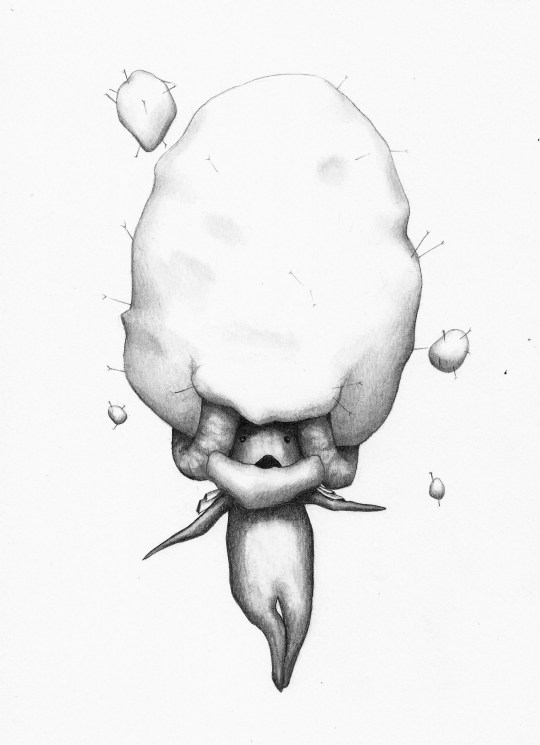
WHIMSICOTT
The windveiled Pokemon
During the summer months the Whimsicott are most prominent in areas of arid dryness, even though they seem to take displeasure to this weather. They often try escape the heat, and cold in the winter months, by sneaking into peoples homes, where they hide in small cramped spaces in clusters. Weeding out the Whimsicott is a difficult task for most as they manage to cling to any surface with their cotton growths. When the weather is pleasant, the Whimsicott will prefer to remain outside where they can create small whirlwinds in which they will ride for pleasure.
18 notes
·
View notes
Photo

COTTONEE
The cotton puff Pokemon
Cottonee are a Pokemon that stick together in their youth. A Cottonee on its own will not survive for very long unless it is returned to its group or receiving constant care. Being so light they tend to float around in cloud like structures. There have been cases in the where such large clusters of Cottonee have caused disruption from something as simple as blocking a road to blanketing an entire city. When aggravated a Cottonee will use its cotton like spores to stun its enemies. Their bodies are completed covered by the cotton it procures, and until they begin to develop into a Whimsicott they will not lose this cotton.
8 notes
·
View notes
Photo
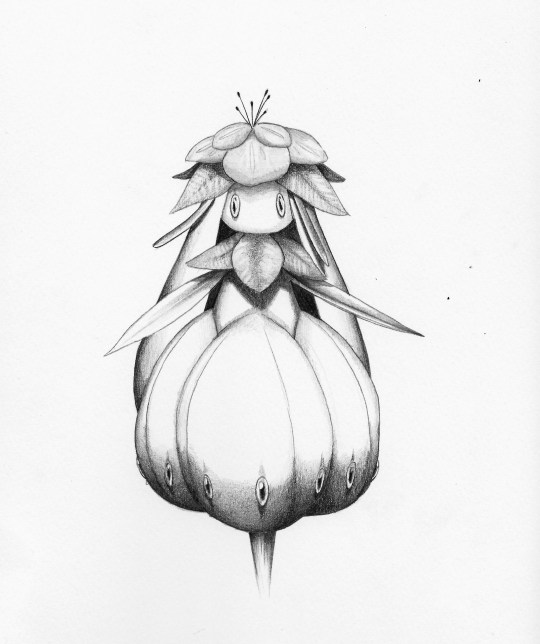
LILLIGANT
The flowering Pokemon
Lilligant grow young Petilil around its waist until they are ready to deploy from their host and begin their own journey alone. Like Petilil the Lilligant are blind, and the markings that look like eyes are decoys to fend of predators. The flat flower that blooms on its head is prized for its soothing aroma. This Pokemon is particularly popular among circles of famous people.
79 notes
·
View notes
Photo

PETILIL
The bulb Pokemon
Petilil are fixed to wear they are planted. They are said to grow well where soil is rich with nutrients, but the exact opposite is true. Petilil will thrive in poor soil, turning the low quality dirt in fertile land. Petilil are blind, and the eyes that grow on its bulbous head are decoy to scare off any other Pokemon that art potentially going to consume it. The leaves that grow on its head are very effective at curing even the worst of hangovers.
9 notes
·
View notes
Photo

CACTURNE
The scarecrow Pokemon
Cacturne come about from a Cacnea becoming too dehydrated. This Pokemon can survive much more lengthy times without water than its previous form, making it a formidable beast in the desert habitat. During the day, they remain completely rooted in the soil/sand and tend to move at all, retaining energy. At night, the Cacturne will begin to move and hunt down prey, yet due to their large base they move at a very slow rate. They have been used as the basis of certain horror tropes, being known to have stalked down wary wanderers of deserts and other Pokemon too weak to continue on.
18 notes
·
View notes
Photo
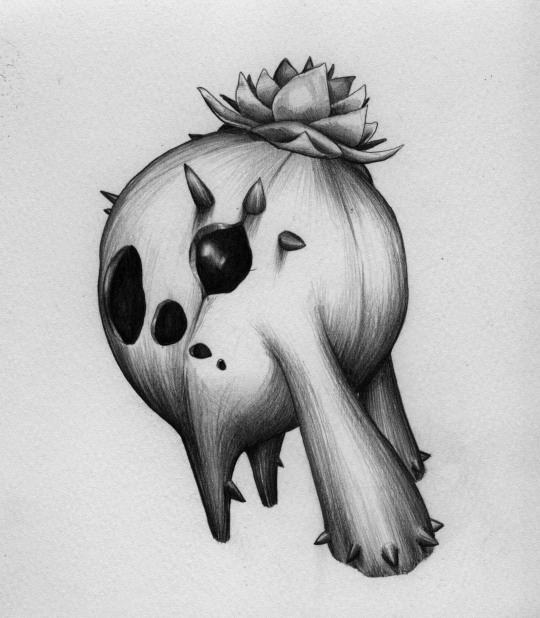
CACNEA
The cactus Pokemon
Cacnea are a Pokemon more suited to an arid and dry environment. Their two pseudo legs are technically roots, along with its club like arms. Though, these are are able to be uprooted and used as a defensive mechanism. The yellow flower on their head is an indicator of how hydrated the Cancea is, being able to remain at full bloom for up to over a month with a decent amount of water stored away. It remains almost permanently leaning back, ready to catch water in its hollows to store away for later use. If the flower is to wilt and completely dry up, the Cacnea will grow into its matured form in order to survive in this weakened state. The flower also holds a sweet scent that draws in unsuspecting prey such as Beautifly and even in some cases Vibrava.
15 notes
·
View notes
Photo
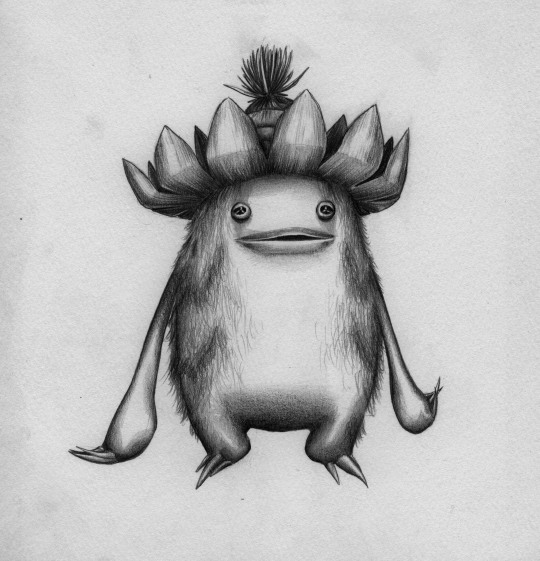
LUDICOLO
The carefree Pokemon
Ludicolo is a special kind of Pokemon that is energized and stimulated by the sound and rhythm of music. Without music it this Pokemon's life they are generally lethargic and slow. It begins to grow from a Lombre when the individual Lombre is ready to leave the body of water it is tied to. The leaf on its head continues to divide, becoming multiple fragments. Ludicolo is the internation mascot for most festivals, as it is identified as the party Pokemon. "Lets get 'colo" is a term generally used to mean getting wild and crazy.
11 notes
·
View notes
Photo
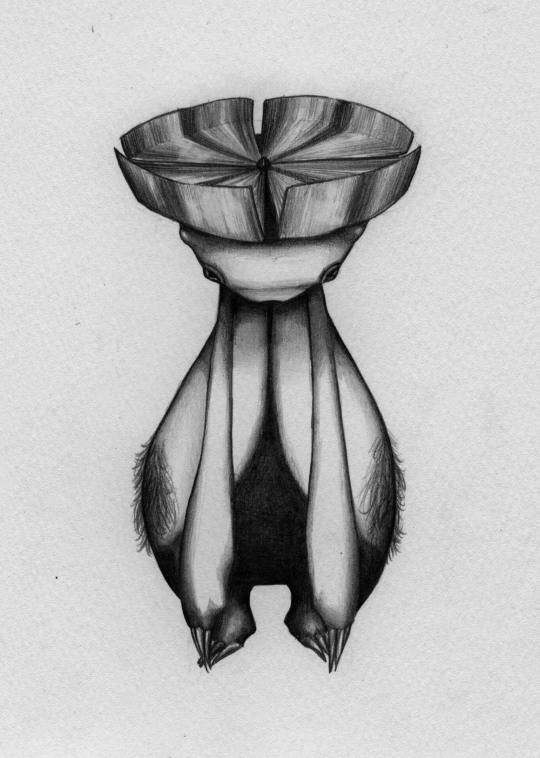
LOMBRE
The jolly Pokemon
Lombre become bipedal once they begin to grow from a Lotad. The leaf of its head begins to develop splits from the centre. Being a herbaceous creature, Lombre consumes a diet mainly of watery mosses and plants. Small tufts of hair grow on its sides, which are very common in the production of paint brushes. During the day, a Lombre will sit on top or among reeds in the water, soaking up sunlight. During the night this Pokemon will wander around the body of water in which it resides, emitting this spooky clicking sound from its beak.
3 notes
·
View notes
Photo

LOTAD
The water-weed Pokemon
Without constant access to water the Lotad's leaf will begin to wilt. They are considered a weed in the water, as they accumulate on mass to infest large bodies of water. As they float on top of the water in pods, they are used by larger Pokemon to ferry across water. A Lotad that is ready to develop into its next form will separate itself from it's pod. It is believed that Lotad once lived on land, but as the leaf on its upper body grew larger it was forced to become a water borne creature.
6 notes
·
View notes
Photo

ROSERADE
The bouquet Pokemon
A Roserade will swing its roses back and forth like incense burners to release a heavy scent that will draw in prey. When another Pokemon is drawn in by the scent of the Roserade it will use its whip like arms to tear at the prey until it is small enough portions for it to consume. The Roserade tend to move about quite a lot, and unlike the Roselia that will always return to the place of planting when it was a Budew, the Roserade possess no loyalties. It is extremely rare to come across a domesticated Roserade, and the only places you will really find one is at garden shows with dedicated growers.
12 notes
·
View notes
Photo

ROSELIA
The thorn Pokemon
It possesses two very pleasant smelling roses. These roses increase colour vibrancy and pleasantness of scent depending the quality of water that it drinks from. While it is easy to plant a Budew in one's garden, it takes a lot of care and time to foster the growth into a Roselia. Once established as a domestic Roselia though, it will become much more independent, often leaving the garden for days a time. The good thing about Roselia though is that they will always return to their places of first planting.
8 notes
·
View notes
Photo
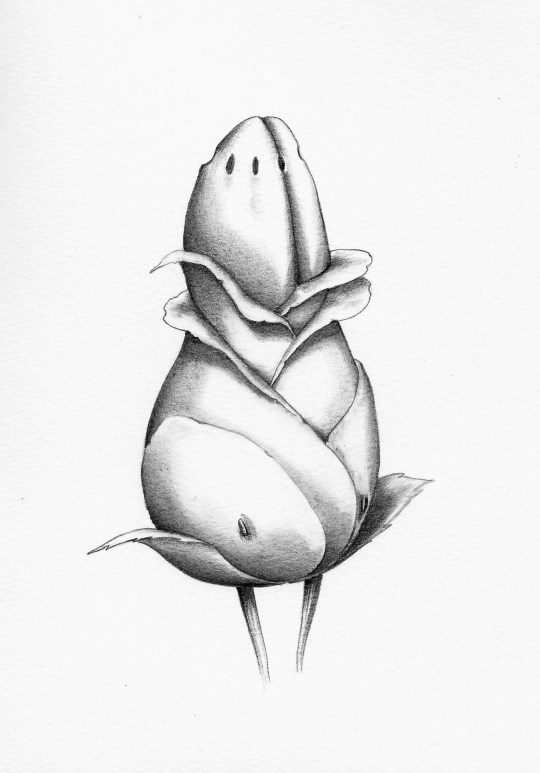
BUDEW
The bud Pokemon
Budew are a Pokemon adapted to warm temperates. When it is happy, it will clap its bud, releasing pollen into the arm. The pollen that comes from Budew in colder climates is said to be the cause of many common colds. The pollen from Budew in warm climates is pleasant smelling and is used in many aromatic scented candles.
50 notes
·
View notes
Photo
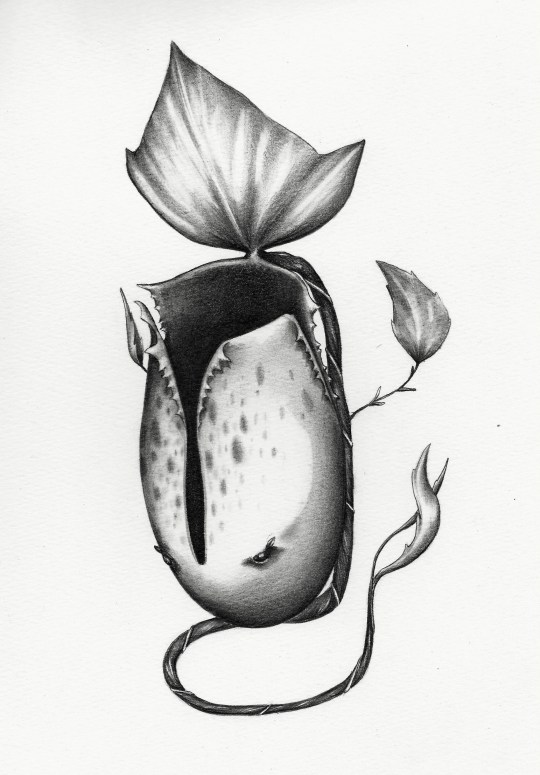
VICTREEBEL
The flycatcher Pokemon
Victreebel, matured from a Weepinbel in the sun, are rumoured to live in large numbers deep within jungles. There are many legends that explorers who never return from forest expeditions are claimed by these large colonies. Though, this is usually a cover for the foolish and inexperienced nature of these explorers. The long vine that grows from the head works like a lure. This vine dances and waves, and with a culmination of a thick heavy smell of honey that secretes from the fluid inside of its body, prey easily find themselves caught in precarious situations.
9 notes
·
View notes
Photo

WEEPINBELL
The flycatcher Pokemon
Weepinbell have matured from a Bellsprout and their heads have become too heavy for their stalks, resulting in a state where their heads constantly rest on the ground. The strong acid that pools in its mouth is capable of melting any prey that foolishly enters its maw. The two leaves that grow from its stalk are as much like knives. They are incredibly sharp and can leave a nasty gash if one gets too close.
5 notes
·
View notes
Photo
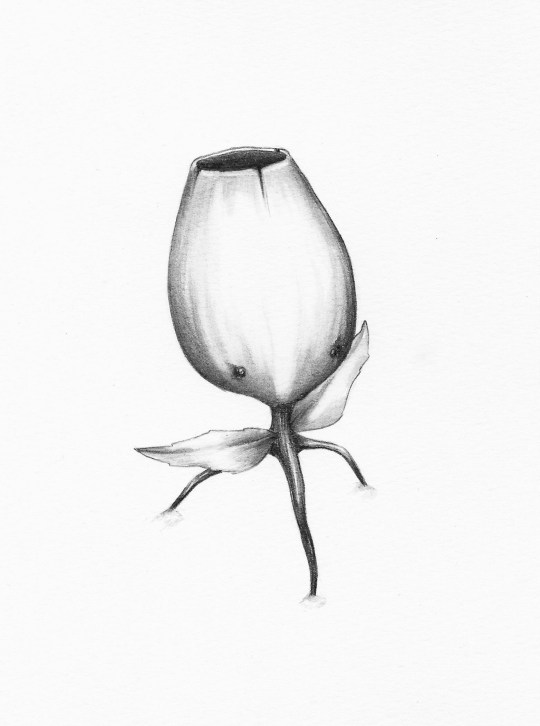
BELLSPROUT
The flower Pokemon
Able to uproot itself when prey come near, Bellsprout can become blindingly fast. Their mouth is on the top most part of their head, which acts as brightly coloured flower to draw in bugs to feed on. They are commonly found in warmer climates, where they can spend majority of the day basking in the sunlight. Eventually their head grows too big and heavy for their root-legs to support them any longer, resulting in the Bellsprout entering the second phase of its life. This second stage is known as the Weepinbell pokemon. The poisonous fluid that accumulates in the bottom of its head is highly corrosive.
8 notes
·
View notes
Photo
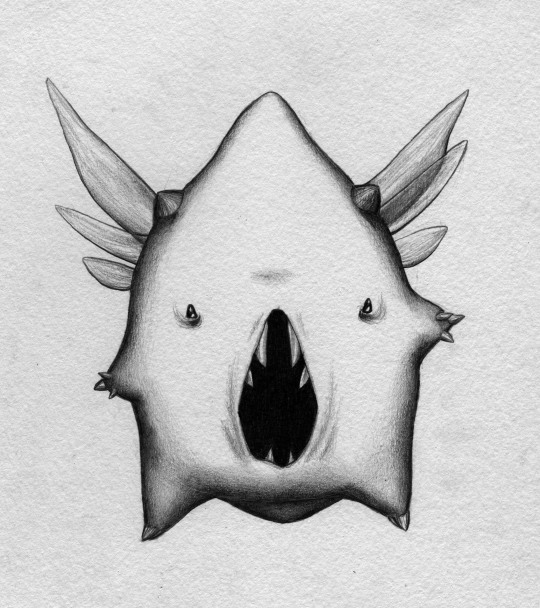
CLEFABLE
The moonlight Pokemon
Clefable are considered the moonlight Pokemon. While the Clefairy only make the brave decision to travel outside its dark and sheltered home, the Clefairy commonly explore in the night time. They are a carnivorous Pokemon, even noted to have been seen devouring numerous Cleffa in one sitting. A bite from Clefable causes the skin to lose colour, dry up and harden. Sunlight makes this Pokemon die, and in recent years hordes of Clefable have been found in the morning light on the ground. It is hypothesized that due to opening of the Distortion World into ours in recent years, the Clefable have been trying to make their way back home.
13 notes
·
View notes
Photo
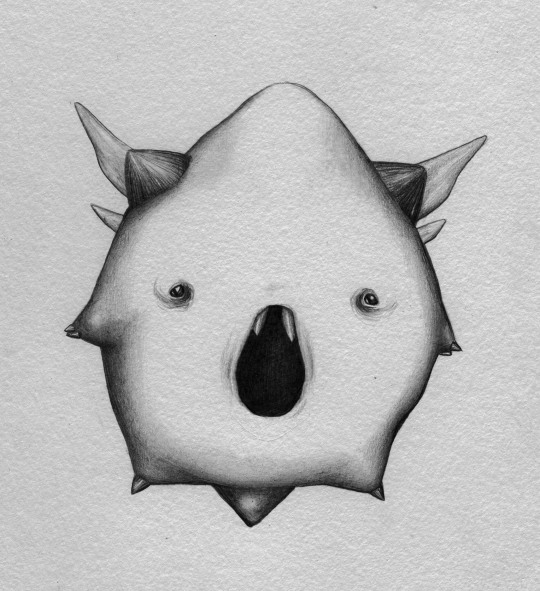
CLEFAIRY
The star-shaped Pokemon
Clefairy are a rarely seen Pokemon, as a Cleffa rarely ever makes it to this stage. They are a constantly agitated and annoyed Pokemon, having no time for the Cleffa, and are always pestering the Clefable. Due to being very illusive and small in numbers, many believe that Cleffa grow to be a cute Pokemon, but those who have actually seen this pale pink Pokemon known as Clefairy would say otherwise. To grow into a Clefable, the Clefairy must make the bold leap of faith to leave its dark home in caves and bathe in the moonlight. Yet staying too long outside may result in sunlight killing the Clefairy. Unlike Cleffa who have a cellular structure that can adapt to live in sunlight, the Clefairy do not, and can not cope with light at all.
5 notes
·
View notes